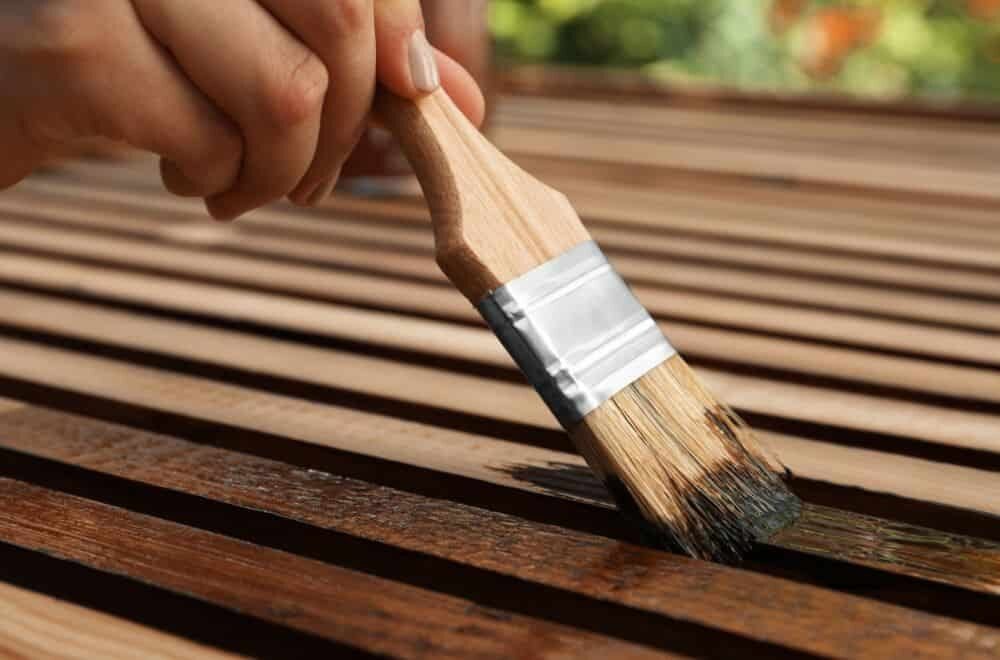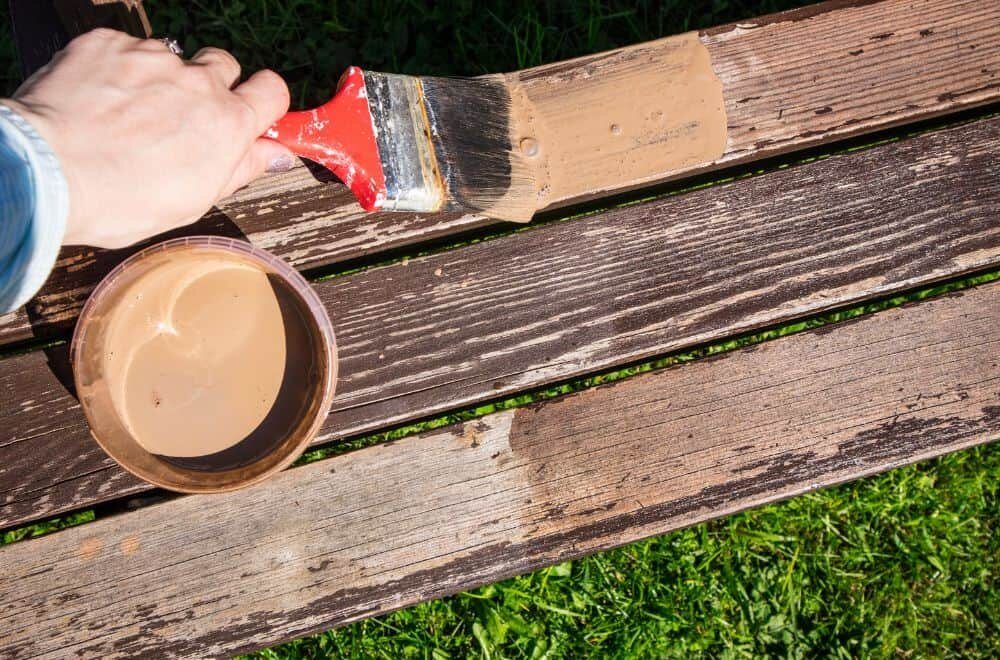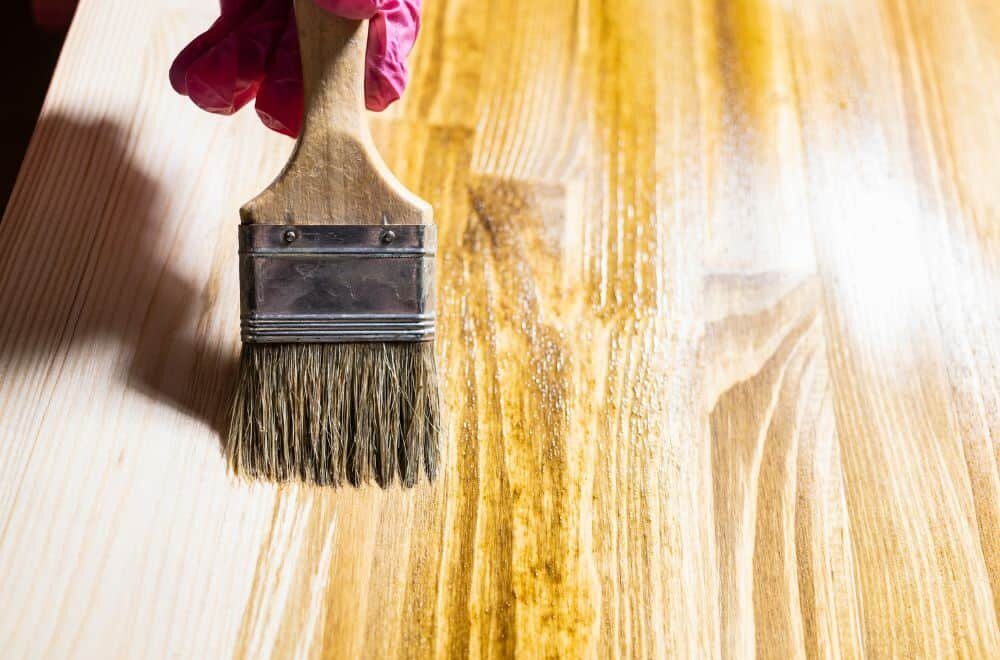Are you planning to stain your pressure-treated wood but unsure of how long you should wait before doing so? If you’re not sure, you’re not alone. Many people are unsure of how long they should wait before staining pressure-treated wood. The answer to this question depends on several factors, including the type of treated wood used, the humidity level, and the temperature.
According to WoodHunger, you may have to wait from four weeks to six months before staining pressure-treated wood. However, this time may increase from four weeks to one month depending on the factors mentioned above. Wood is an extremely porous material, and it is likely to absorb moisture more quickly. This means that you need to wait until the wood dries completely before applying the stain. In this article, we will explore the factors that affect how long you should wait before staining pressure-treated wood and provide you with some tips on how to do it correctly.
Understanding Pressure-Treated Wood
If you are planning to build a deck or any outdoor structure, you may have heard about pressure-treated wood. Pressure-treated wood is a popular choice for outdoor projects because it is resistant to rot and decay. However, before you start working with pressure-treated wood, it’s important to understand what it is and how it’s made.
What is Pressure-Treated Wood?
Pressure-treated wood is lumber that has been treated with chemicals to make it resistant to rot, decay, and insect damage. The process involves placing the wood in a large cylinder and then pumping it with a solution of water and preservatives under pressure. This forces the preservatives deep into the wood, making it resistant to decay and insects.
Types of Pressure-Treated Wood
There are two types of pressure-treated wood: above-ground and ground-contact. Above-ground pressure-treated wood is designed for use in areas that are not in direct contact with the ground. This type of wood is typically used for decks, fences, and other outdoor structures. Ground-contact pressure-treated wood is designed for use in areas that are in direct contact with the ground, such as posts and retaining walls.
How to Identify Pressure-Treated Wood
Pressure-treated wood is easy to identify. It has a greenish tint due to the chemicals used in the treatment process. You may also see small slits or punctures in the wood, which are made during the treatment process to allow the preservatives to penetrate the wood.
How Long to Wait Before Staining Pressure-Treated Wood
One important thing to keep in mind when working with pressure-treated wood is that it needs to dry out before you can stain or paint it. The drying time can vary depending on a variety of factors, such as the type of wood used, humidity levels, and temperature. As a general rule, you should wait at least four weeks before staining or painting pressure-treated wood. However, if you want to speed up the process, you can purchase wood that has been air-dried or kiln-dried after treatment. This wood has a lower moisture content and can be stained or painted right away.
The Importance of Drying Time

When it comes to staining pressure-treated wood, drying time is an essential factor to consider. Proper drying of the wood is crucial to ensure that the stain adheres well and looks great. In this section, we will discuss the importance of drying time and factors that affect it.
Weather Conditions
Weather conditions play a significant role in the drying time of pressure-treated wood. If the weather is humid or rainy, the wood will take longer to dry. On the other hand, if the weather is dry and sunny, the wood will dry faster. It is essential to check the weather forecast before starting to stain your pressure-treated wood. If the forecast indicates rain or high humidity, it’s best to wait until the weather improves before staining.
Wood Type
The type of pressure-treated wood you are using also affects drying time. Some types of pressure-treated wood have a higher moisture content than others, making them take longer to dry. It’s essential to check the moisture content of the wood before staining. If the wood is still wet, the stain will not adhere well, and the finish will look uneven.
To determine if the wood is dry enough to stain, you can perform a simple test. Take a cloth saturated with distilled water and wipe it over the surface of the wood. If the cloth absorbs moisture, the wood is not dry enough to stain. If the cloth doesn’t absorb any moisture, the wood is ready to be stained.
In conclusion, drying time is a critical factor when it comes to staining pressure-treated wood. Weather conditions and wood type affect drying time, and it’s essential to consider them before staining. Waiting for the wood to dry properly will ensure that the stain adheres well and looks great.
General Waiting Period Before Staining
If you’re planning to stain pressure-treated wood, it’s important to wait for the wood to dry out before applying any stain. The general waiting period before staining pressure-treated wood is around 90 days after the project completion. However, the amount of time you need to wait depends on various factors such as the type of treated lumber, humidity in your area, and the size of logs.
For wet treated lumber, the wait time may exceed up to 6 months. External factors such as the weather and general environment can affect how quickly it dries. The best way to tell if the wood is ready to be stained is to test it.
You should keep in mind that staining pressure-treated wood too soon can cause the stain to not adhere properly, resulting in an uneven finish. Additionally, if the wood is not completely dry, the stain may not penetrate the wood properly, leading to a poor finish.
It is important to note that some pressure-treated lumber is kiln-dried, which means it dries faster than lumber that is air-dried. If you’re unsure whether your pressure-treated wood is kiln-dried or not, you can check with the manufacturer or supplier.
In summary, the general waiting period before staining pressure-treated wood is around 90 days, but it can vary depending on various factors. It’s important to wait for the wood to dry out completely before staining to ensure a proper finish.
Factors Affecting Staining Time

When it comes to staining pressure-treated wood, there are several factors that can affect the time it takes for the wood to be ready for staining. Here are some of the most important factors to consider:
Humidity
Humidity levels can have a significant impact on the time it takes for pressure-treated wood to dry out and be ready for staining. If the humidity is high, the wood will take longer to dry, which means you may need to wait longer before you can apply the stain. On the other hand, if the humidity is low, the wood will dry out more quickly, which means you may be able to apply the stain sooner.
Temperature
Temperature is another important factor to consider when staining pressure-treated wood. If the temperature is too low, the wood will take longer to dry out, which means you may need to wait longer before you can apply the stain. On the other hand, if the temperature is too high, the wood may dry out too quickly, which can cause the wood to crack and split. Ideally, you should aim for a temperature between 50 and 90 degrees Fahrenheit when staining pressure-treated wood.
Wood Porosity
The porosity of the wood can also affect the time it takes for pressure-treated wood to be ready for staining. Wood that is more porous will absorb moisture more quickly, which means it will take longer to dry out. This can be an issue if you are staining a large area, as it may take longer for the entire area to dry out before you can apply the stain. To speed up the drying process, you can use a fan or dehumidifier to help remove excess moisture from the air.
By taking these factors into account, you can ensure that your pressure-treated wood is ready for staining as quickly as possible. Keep in mind that it is always better to wait a little longer than to rush the process and end up with a subpar finish.
Choosing the Right Stain
When it comes to choosing the right stain for your pressure-treated wood, there are a few things to consider. The type of stain you choose will depend on your personal preference and the look you want to achieve. In this section, we will discuss the two main types of stains: oil-based and water-based.
Oil-Based Stains
Oil-based stains are a popular choice for pressure-treated wood because they penetrate deeply into the wood, providing excellent protection against water and weather damage. They also tend to last longer than water-based stains. However, oil-based stains can take longer to dry and may require more coats than water-based stains.
If you decide to use an oil-based stain, it is important to choose one that is specifically designed for exterior use. Look for a stain that contains a high percentage of oil and a low percentage of resin. This will help the stain penetrate deeply into the wood and provide long-lasting protection.
Water-Based Stains
Water-based stains are another popular choice for pressure-treated wood. They are easy to apply, dry quickly, and are available in a wide range of colors. Water-based stains are also environmentally friendly since they contain fewer chemicals than oil-based stains.
When choosing a water-based stain, look for one that is specifically designed for use on pressure-treated wood. These stains are formulated to penetrate deeply into the wood and provide long-lasting protection against weather damage.
In summary, both oil-based and water-based stains are suitable for pressure-treated wood. The choice you make will depend on your personal preference and the look you want to achieve. If you want a long-lasting stain that provides excellent protection against water and weather damage, an oil-based stain may be the best choice. If you prefer a stain that is easy to apply and dries quickly, a water-based stain may be the way to go.
Staining Process

Staining pressure-treated wood is an effective way to enhance its appearance and increase its lifespan. Here are the steps you need to follow when staining pressure-treated wood:
Preparation
Before you start staining, make sure the wood is dry and free of any debris. Here are some preparation steps you should take:
- Wait for the wood to dry: Depending on the type of treated wood used, humidity level, and temperature, you may have to wait from four weeks to six months before staining pressure-treated wood.
- Clean the wood: Remove any dirt, dust, or debris from the wood surface using a stiff-bristled brush or a pressure washer.
- Sand the wood: Use sandpaper to smooth out any rough spots or splinters on the wood surface. This will help the stain to adhere better to the wood.
Application
Once the wood is prepared, you can start applying the stain. Here are some tips to keep in mind:
- Choose the right stain: Any stain that is designed for exterior use will work to stain pressure-treated wood. While you will find oil-based stains and latex stains, most experts recommend using an oil-based stain for pressure-treated wood.
- Apply the stain: Use a paintbrush, roller, or sprayer to apply the stain evenly over the wood surface. Make sure to follow the manufacturer’s instructions for application and drying time.
- Apply a second coat: Depending on the type of stain you use, you may need to apply a second coat for better coverage and protection.
Maintenance
To maintain the appearance and protection of the stained wood, you need to take some maintenance steps. Here are some tips to keep in mind:
- Clean the wood: Regularly clean the wood surface using a mild detergent and water. This will help to remove any dirt or debris that can damage the wood over time.
- Inspect the wood: Periodically inspect the wood surface for any signs of damage, such as cracks or splits. If you notice any damage, repair it as soon as possible to prevent further damage.
- Reapply the stain: Depending on the type of stain you use and the weather conditions in your area, you may need to reapply the stain every few years to maintain its protection and appearance.
Following these steps will help you to effectively stain pressure-treated wood and maintain its appearance and protection for years to come.
Frequently Asked Questions
How long does pressure-treated wood take to dry before staining?
It is recommended to wait for at least 4 weeks before staining pressure-treated wood. However, the drying time may vary depending on the climate and humidity in your area. It’s essential to ensure that the wood is completely dry before applying any stain to avoid any unwanted results.
Can you stain pressure treated wood right away?
No, you should not stain pressure-treated wood right away. The wood needs time to dry out and for the chemicals to settle into the wood fibers. Staining the wood too soon may result in an uneven finish or the stain not adhering correctly.
When is the best time to stain pressure treated wood?
The best time to stain pressure-treated wood is when the wood is completely dry. It’s also recommended to stain the wood on a dry day with temperatures between 50-90°F. Avoid staining the wood in direct sunlight or when the wood is too hot.
How do I know if pressure treated wood is ready to be stained?
You can test if the pressure-treated wood is ready to be stained by performing a water droplet test. Sprinkle a few droplets of water onto the wood surface. If the water droplets absorb into the wood, it’s ready to be stained. If the water droplets bead up on the surface, the wood is not ready to be stained yet.
What happens if you stain pressure treated wood too soon?
If you stain pressure-treated wood too soon, the stain may not adhere to the wood properly, resulting in an uneven finish. The wood may also not absorb the stain evenly, resulting in blotchy or streaky areas.
Do I need to seal pressure treated wood before staining?
No, you do not need to seal pressure-treated wood before staining. The chemicals used in pressure treatment already provide a level of protection against rot and decay. However, it’s recommended to use a high-quality stain that contains a sealer to provide additional protection and prolong the life of the wood.




